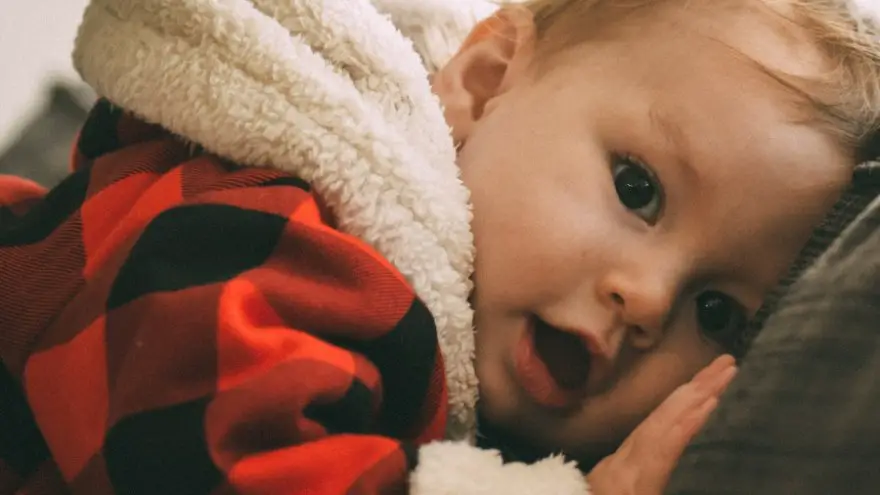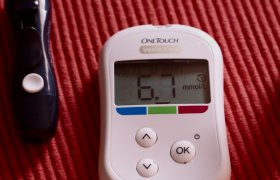Baby Skincare in Winter 101

Winter brings many things with it, like cozy sweaters, more time indoors with family, a host of traditions and holidays, and some really great food. It also brings a new challenge for parents in the form of dealing with the consequences of winter for your baby’s skin. Keeping baby comfortable and healthy during the winter doesn’t have to be hard as soon as you get the routine down. The game plan is easy to implement and understand as soon as you fully understand the risks, how to prevent problems, and what to do when symptoms arise.
Winter air is not just bitingly cold, it can be irritating to baby’s skin, especially if they are drooling more often due to teething or just being a baby. Compounding the problem is the heat in our houses and other indoor areas tend to dry out the air which is another irritant. Between protecting your baby from the cold and the heat you may feel like getting a handle on your baby’s skincare in winter is impossible, but with a little extra prep and a few changes to your routine you can keep your baby as happy and comfortable as possible.
As always the best way to handle a problem is to try to prevent it in the first place. With winter skin problems the best way to prevent them is to understand their cause and try to mitigate or reduce its effect. For example, if you’re worried about dry skin there are many ways to limit or even prevent it by making good choices.
In the bath
It may be tempting to make baths a little warmer in the winter to help with the discomfort of being cold and wet at the same time, but make sure you’re not making the bath too hot. Obviously, you always check the water to make sure it won’t burn the baby, but even going up a few degrees can make skin drier. A good warm bath is always going to be better for skin than a hot one.
 When it comes to soaps, swapping to a gentler one during the winter is a great idea. Avoid fragrances and dyes, but also look into the ingredients to get a good feel for what the soap contains. Soaps with ingredients like olive oil, aloe, shea butter, and other soothing components will serve your baby’s skin well.
When it comes to soaps, swapping to a gentler one during the winter is a great idea. Avoid fragrances and dyes, but also look into the ingredients to get a good feel for what the soap contains. Soaps with ingredients like olive oil, aloe, shea butter, and other soothing components will serve your baby’s skin well.
After the bath, make sure to dry your baby thoroughly because even though it seems counterintuitive moisture can cause skin irritation just as much as dry skin can. Rashes from having moisture in skin folds can get really bad year round but especially in winter when we tend to dress in warm clothes that aren’t as breathable making moisture stick around.
Adding lotion to the bath routine can be a big help too, swapping to a thicker cream if problems are already present can be a great way to up your protection and comfort quotient. Again, avoid any lotions that contain ingredients that your baby may be irritated by such as dyes and perfumes. If a suitable lotion cannot be found, many find success with coconut oil or just plain aloe.
Going out
Keeping baby warm is key but make sure you’re doing it safely. The current advice is to not let your baby have a blanket between them and the straps in their car seat as this can affect the functioning of the seat making your baby less safe.
When dressing your baby for winter weather choose natural fabrics that let their skin breathe like cotton. Wool is tempting due to its ability to keep baby warm, but it may also be too scratchy or even trap moisture in causing irritation.
Avoid keeping baby too warm. While babies are unable to properly regulate their temperature, it’s not so out of control that they need tons of extra layers. Most of the time one more layer than what you’re wearing is adequate. Babies can get heat rash even in the winter, so dressing in layers gives you the functionality you need to adjust your baby’s clothes in relation to the weather conditions.
Don’t slack on the sunscreen even though the days are dreary. The sun is up year round and even in the winter sunburns can happen, especially during snowy times when the sun reflects off the snow.
Spot protection
Your baby has a few areas that are typically going to be more troublesome so stock up on the items you need to help should problems arise early. A baby who is teething can become irritated on their face and in the folds of their neck from drooling, so keep that area dry and apply petroleum jelly or another protectant gel to keep the irritation level down.
Cradle cap can become worse during the winter months, and it’s not always easy to prevent or treat, but having a good baby brush and keeping the area clean and moisturized can help.
Diaper rash can become more prevalent during the winter months as well since all those layers may hold the diaper closer to the skin and you might not realize it’s time for a change either. Using a cream is better than using a powder now, and making sure the baby is fully cleaned and dried is key.
 When to see a doctor
When to see a doctor
Sometimes despite all our best efforts, things get out of hand. Knowing when to see the doctor is important. If your baby’s skin is not responding to your preventative measures or problems seem to be worsening it’s time to take your baby into the doctor. They may be able to diagnose another problem that is hiding behind the symptoms of dry winter skin like an allergy or even an infection. If your baby has symptoms of thrush or a yeast problem, a doctor can help you diagnose and treat that.
If your baby develops a new rash or irritation that has come on suddenly, it’s definitely time to see a doctor. Certain infections that can be spread easily in winter weather and show up like a rash. Hand, foot, and mouth disease, for example, can begin with a painful rash and a fever and needs a doctor’s advice.
No matter what happens, remember that you have choices and can make adjustments for what works well for your family and your baby. Winter time can be wonderful for everyone, with a few simple changes to routine and a little bit of extra attention.







